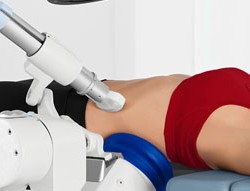Lithotripsy is a medical procedure used to treat certain types of kidney stones and stones in other organs, such as your gallbladder or liver.
Kidney stones occur when minerals and other substances in your urine crystallize in your kidneys, forming solid masses, or stones. These may consist of small, sharp-edged crystals or smoother, heavier formations that resemble polished river rocks. They usually exit your body naturally during urination.
However, sometimes your body can’t pass larger formations through urination. This can lead to kidney damage. People with kidney stones may experience bleeding, severe pain, or urinary tract infections. When stones begin to cause these types of problems, your urologist in Muzaffarpur may suggest lithotripsy.
How does lithotripsy work?
Lithotripsy uses sound waves to break up large kidney stones into smaller pieces. These sound waves are also called high-energy shock waves. The most common form of lithotripsy is extracorporeal shock wave lithotripsy (ESWL).
Extracorporeal means “outside the body.” In this case, it refers to the source of the shock waves. During ESWL, a special machine called a lithotripter generates the shock waves. The waves travel into your body and break apart the stones.
ESWL has been around since the early 1980s. It quickly replaced surgery as the treatment of choice for larger kidney stones. ESWL is a noninvasive procedure, which means it doesn’t require surgery. Noninvasive procedures are generally safer and easier to recover from than invasive procedures.
Lithotripsy takes about 45 minutes to an hour to perform. You’ll likely be given some form of anesthesia (local, regional, or general) so you don’t experience any pain.
After the procedure, stone debris is removed from your kidneys or ureter, the tube leading from your kidney to your bladder, through urination.
